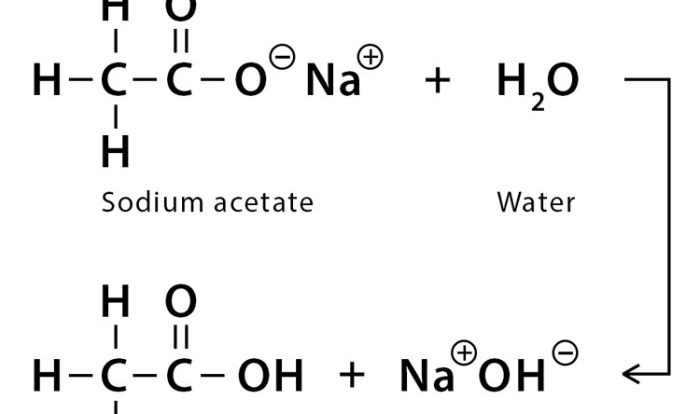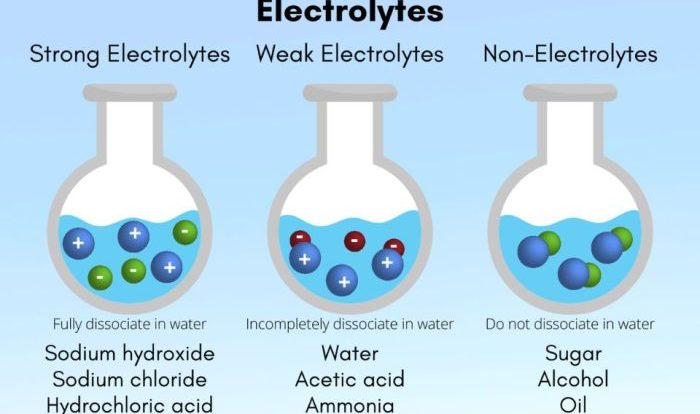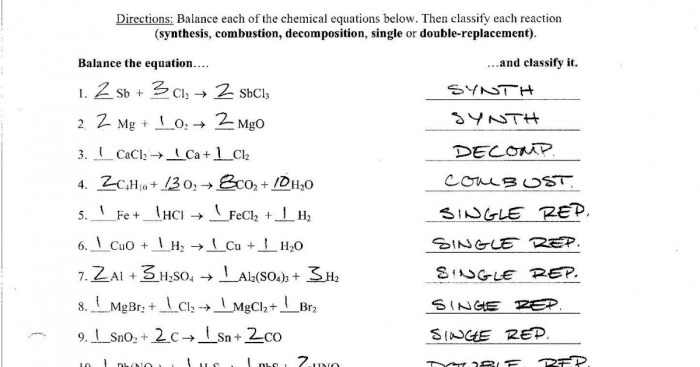Embark on a journey through the fascinating world of chemistry with our comprehensive ionic names and formulas worksheet. Dive into the intricacies of naming and writing ionic compounds, unlocking the secrets of their unique properties and applications.
Prepare to unravel the mysteries of ionic nomenclature, mastering the rules that govern the naming of these essential chemical compounds. Explore the significance of Roman numerals, delve into the intricacies of ionic formula writing, and enhance your understanding with a series of engaging practice problems.
Ionic Nomenclature
Ionic nomenclature refers to the systematic naming of ionic compounds, which are formed by the electrostatic attraction between positively charged ions (cations) and negatively charged ions (anions). To name an ionic compound, we follow specific rules that consider the charges of the ions involved.
Rules for Naming Ionic Compounds
- The cation is named first, followed by the anion.
- The cation’s name is the same as the element’s name.
- The anion’s name is derived from the element’s name with the suffix “-ide”.
- If the metal ion can have multiple charges, a Roman numeral in parentheses is used after the metal’s name to indicate its charge.
Examples of Ionic Compound Names and Formulas
- Sodium chloride (NaCl): Sodium ion (Na+) and chloride ion (Cl-)
- Potassium iodide (KI): Potassium ion (K+) and iodide ion (I-)
- Iron(III) oxide (Fe 2O 3): Iron ion with a charge of +3 (Fe 3+) and oxide ion (O 2-)
Use of Roman Numerals in Ionic Compound Names
Roman numerals are used to indicate the charge of a metal ion when it can have multiple charges. This is necessary to distinguish between different ionic compounds formed by the same metal element.
For example, iron can form two common ions: Fe 2+(iron(II)) and Fe 3+(iron(III)). The Roman numerals in parentheses after the metal’s name specify the charge of the ion in the compound.
Ionic Formula Writing
Ionic formulas represent the simplest whole-number ratio of cations to anions in an ionic compound. Writing ionic formulas involves determining the charges of the ions involved and balancing their charges to form a neutral compound.
To write an ionic formula, follow these steps:
- Identify the cation and anion in the compound.
- Determine the charges of the cation and anion.
- Balance the charges by adjusting the subscripts of the ions.
- Write the formula with the cation first, followed by the anion.
Examples of Ionic Formula Writing Problems
- Write the ionic formula for sodium chloride (NaCl).
- Write the ionic formula for calcium oxide (CaO).
- Write the ionic formula for aluminum oxide (Al 2O 3).
Use of Charges in Ionic Formula Writing
The charges of the ions play a crucial role in determining the correct ionic formula. The charges must balance to form a neutral compound. For example, in NaCl, the sodium ion (Na +) has a +1 charge, while the chloride ion (Cl –) has a -1 charge.
To balance these charges, the formula must be NaCl, with one sodium ion for every chloride ion.
Practice Problems
Practice problems on ionic nomenclature and formula writing can help you solidify your understanding of these concepts. These problems vary in difficulty, so you can start with the easier ones and work your way up to the more challenging ones.
Answer keys are provided for all of the problems, so you can check your work and see where you need to improve.
Ionic Nomenclature
Write the correct ionic name for each of the following compounds:
- NaCl
- CaO
- Fe 2O 3
- NH 4Cl
- Al 2(SO 4) 3
Ionic Formula Writing
Write the correct ionic formula for each of the following compounds:
- Sodium chloride
- Calcium oxide
- Iron(III) oxide
- Ammonium chloride
- Aluminum sulfate
Answer Keys
Ionic Nomenclature
- Sodium chloride
- Calcium oxide
- Iron(III) oxide
- Ammonium chloride
- Aluminum sulfate
Ionic Formula Writing
- NaCl
- CaO
- Fe 2O 3
- NH 4Cl
- Al 2(SO 4) 3
Extensions
In the realm of ionic compounds, we encounter a fascinating concept known as polyatomic ions. These are groups of atoms that carry an overall charge and behave as a single unit within a compound. They play a significant role in ionic formula writing and the understanding of chemical reactions.
Polyatomic ions are composed of multiple atoms covalently bonded together, with a net positive or negative charge. Some common examples of polyatomic ions include:
Polyatomic Ions and their Formulas
- Ammonium (NH 4+)
- Hydroxide (OH –)
- Carbonate (CO 32-)
- Sulfate (SO 42-)
- Nitrate (NO 3–)
When writing ionic formulas involving polyatomic ions, it is important to use parentheses to enclose the polyatomic ion. This helps to differentiate it from the individual atoms that make up the ion and ensures the correct overall charge of the compound.
Real-World Applications: Ionic Names And Formulas Worksheet
Ionic compounds are not just theoretical concepts but play a crucial role in our daily lives and various industries. They are essential for numerous applications, from everyday household products to advanced technological advancements.
Let’s explore some real-world examples of ionic compounds and their importance in different sectors:
Household Products
- Sodium chloride (NaCl):Table salt, used for seasoning food and preserving meat.
- Sodium bicarbonate (NaHCO3): Baking soda, used as a leavening agent in baking and a cleaning agent.
- Sodium fluoride (NaF):Added to toothpaste to prevent tooth decay.
Industries, Ionic names and formulas worksheet
- Chlorine (Cl–): Used in water treatment plants to disinfect water.
- Sulfuric acid (H2SO 4): Used in fertilizer production, metalworking, and battery manufacturing.
- Sodium hydroxide (NaOH):Used in soap making, paper production, and drain cleaning.
Medical Applications
- Potassium chloride (KCl):Used in intravenous fluids to regulate electrolyte balance.
- Magnesium sulfate (MgSO4): Used as an Epsom salt bath for muscle relaxation and pain relief.
- Calcium carbonate (CaCO3): Used as an antacid to neutralize stomach acid.
Other Applications
- Road salt (NaCl):Used to melt ice on roads during winter.
- Fire extinguishers:Contain ionic compounds that release ions to smother flames.
- Batteries:Use ionic reactions to store and release electrical energy.
Table Summarizing Applications of Ionic Compounds
| Ionic Compound | Application |
|---|---|
| NaCl | Table salt, road salt |
| NaHCO3 | Baking soda |
| NaF | Toothpaste |
| Cl– | Water treatment |
| H2SO4 | Fertilizer, metalworking |
| NaOH | Soap, paper, drain cleaning |
| KCl | Intravenous fluids |
| MgSO4 | Epsom salt baths |
| CaCO3 | Antacid |
FAQ Explained
What is the purpose of this worksheet?
This worksheet is designed to provide a comprehensive understanding of ionic names and formulas, including the rules for naming, formula writing, and practical applications.
What level of chemistry knowledge is required?
This worksheet is suitable for students with a basic understanding of chemistry, including the concepts of atoms, ions, and chemical bonding.
Are there any additional resources available?
Yes, the worksheet includes links to external resources, such as videos and interactive simulations, to enhance your learning experience.


